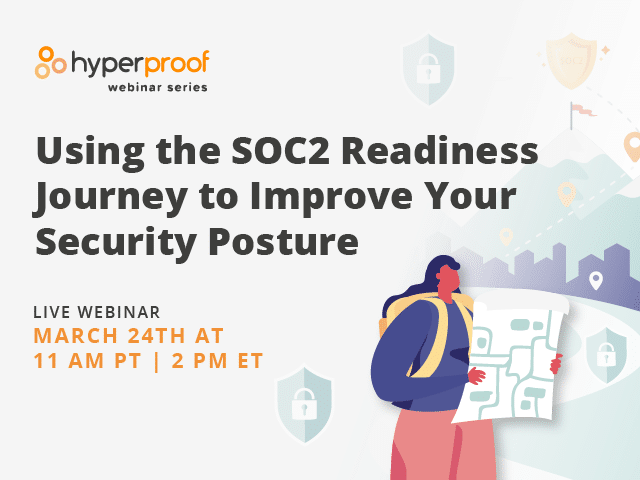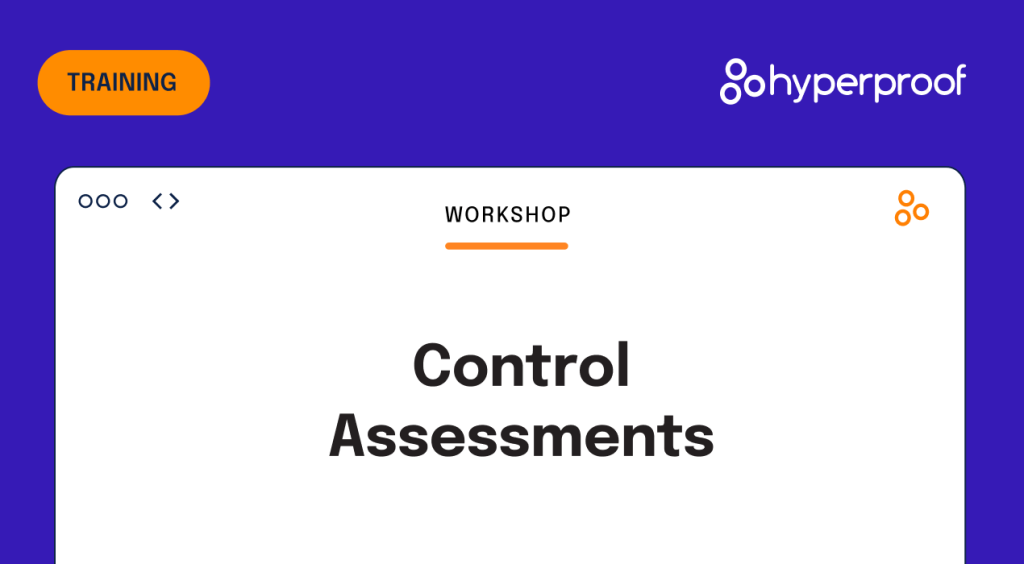Understanding Audit Readiness Assessments: Their Importance and Whether You Need Them

As a compliance management software company, we at Hyperproof believe it’s important to hold ourselves to the highest standards in all that we do. That means treating audits and assessments as strategic tools – not just one-off hurdles to clear. Even before we’ve made our product publicly available, we’re already making a significant investment in compliance. We believe that if we are thoughtful about the processes, policies, and procedures we put in place now, we’ll be well-positioned to succeed in the long term.
Given the industry and regulatory environment we operate in, we feel it is especially important for our company to focus on data protection and privacy and pay close attention to our security controls. To ensure that security and compliance are baked into our daily operations, we set a goal to obtain SOC 2, ISO 27001, and HIPAA reports within the next 12 months.
We recently reached a couple of key milestones in our compliance journey: We’ve hired an auditing firm to conduct the examinations, defined some key internal processes, and created some fundamental policies for our compliance program. Additionally, we met with our auditor in person to do a readiness assessment for SOC 2 and ISO 27001.
In this post, we’ll discuss the thought process behind our decision to obtain these compliance certifications, why we chose to undergo a readiness assessment prior to the audits, and what we’ve learned from completing the audit readiness assessment with our auditor. Our goal is to help those who are relatively new to compliance understand what to expect during the initial phases of their compliance journey and provide some insights on how to make the journey smoother.
Pursuing compliance: our journey to SOC 2, ISO 27001, and HIPAA Certification
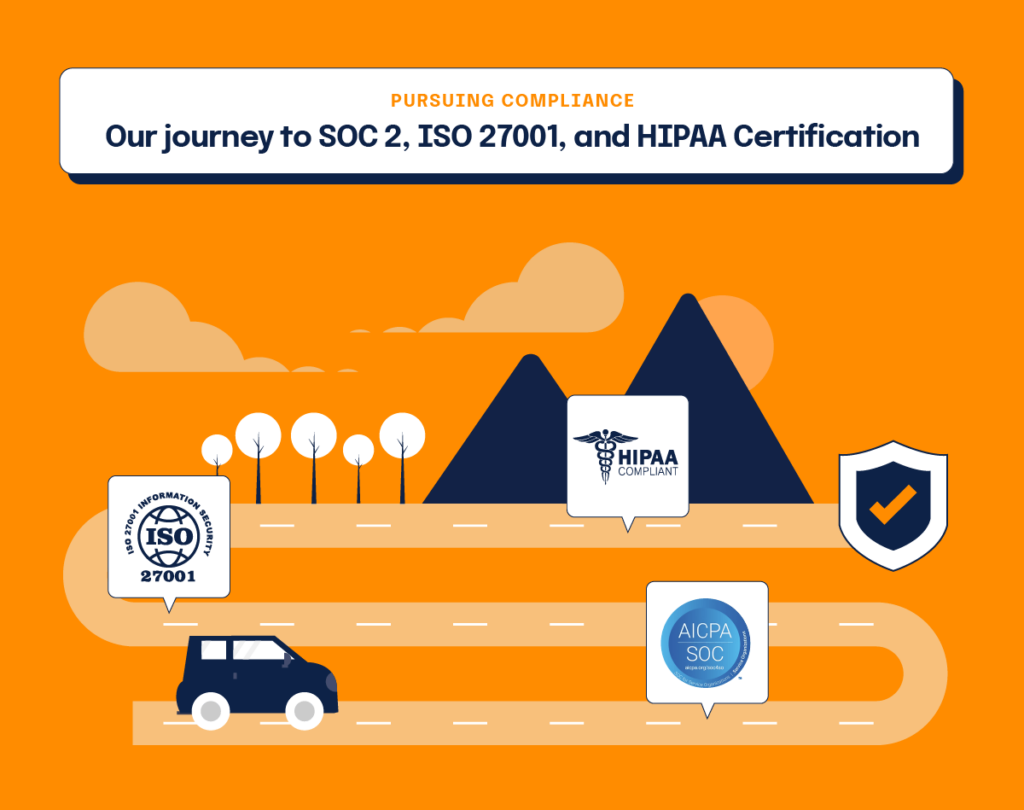
At a high level, we decided to get SOC 2 and ISO 27001 compliant because these certifications are extremely applicable to Software as a Service (SaaS) companies that still need to target particular industries. HIPAA would be a good standard to achieve because it provides us the license to serve healthcare customers, who have to meet stringent regulatory requirements. We decided to tackle these three standards simultaneously rather than one at a time because it helps us save time and money.
Once we decided to work towards compliance with these regulations, we selected an auditing firm with expertise in SOC 2, ISO 27001, and HIPAA audits. The audits would evaluate our company’s processes, technology, policies, procedures, and controls against the requirements set out in these regimes. Additionally, we’ve opted to engage with our auditor immediately by going through a readiness assessment.
What is an audit readiness assessment?

An audit readiness assessment is a structured pre-audit review that evaluates how prepared your organization is to undergo a formal audit. In simple terms, an assessment is a dry run; an audit is the real exam. The assessment identifies gaps in your controls, documentation, and processes before the official auditor issues an opinion, so you can remediate weaknesses and avoid surprises. In other words, it’s a compliance audit readiness assessment that supports compliance audit readiness by turning a vague “are we ready?” into a concrete audit readiness checklist with owners, due dates, and evidence requirements. For teams aiming for audit-ready IT compliance, the benefits of pre-audit readiness check efforts show up fast: clearer priorities, fewer last-minute evidence scrambles, and stronger compliance and audit readiness across stakeholders.
Once the on-site discussions are complete, the auditor will produce a report that outlines the gaps in our compliance program so we know which controls work and which ones are likely to fail in an audit. The auditor will also provide a set of notes on how to strengthen our controls.
Audit vs assessment: what’s the difference?
Teams often use the terms audit and assessment interchangeably, but they play different roles in your compliance program:
- Audit
- A formal, independent examination performed by an external auditor.
- Follows a defined standard or framework (e.g., SOC 2, ISO 27001, HIPAA).
- Results in an opinion or attestation that customers, regulators, and partners rely on.
- Has higher stakes: audit findings can impact certifications, contracts, and reputation.
- Assessment
- A diagnostic review to understand where you stand before (or between) audits.
- Can be done internally or with an external firm as an audit & compliance readiness review.
- Focuses on identifying gaps, risks, and remediation priorities, not issuing a formal opinion.
- Lowers risk by giving you time to fix issues before they show up as audit findings.
When you think of audits and assessments together, the assessment is your opportunity to practice, tune your controls, and align stakeholders – so the actual audit becomes a confirmation of work you’ve already done, instead of a stressful discovery exercise.
The benefits of going through an audit readiness assessment
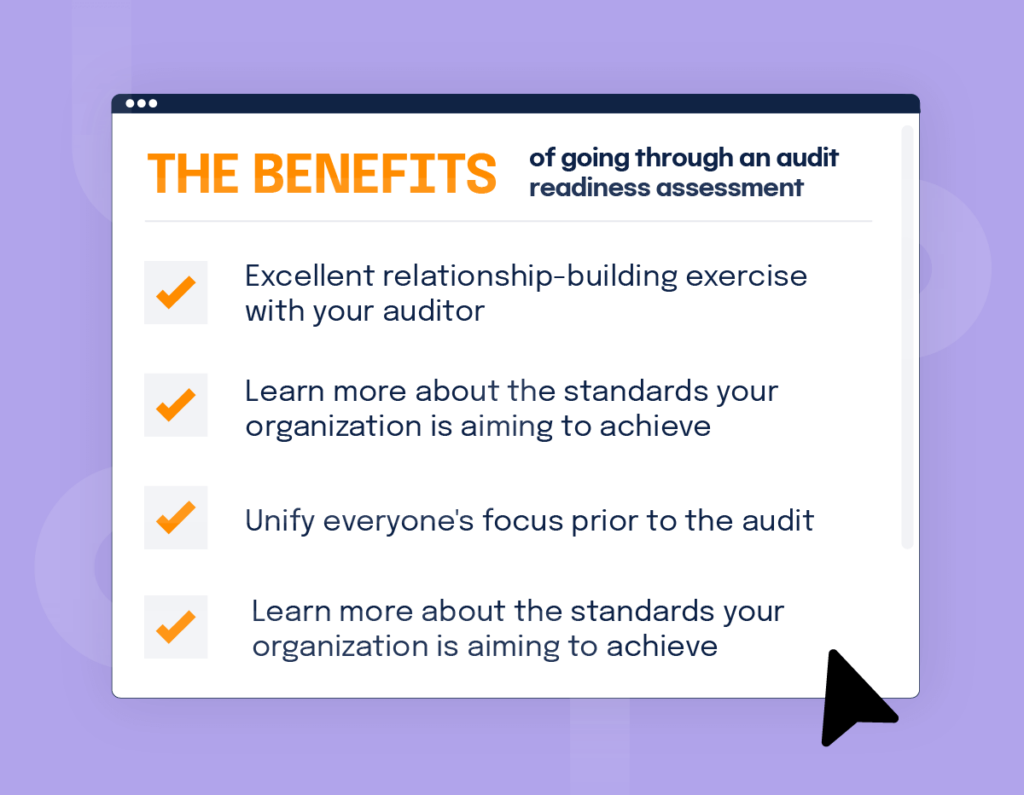
Although the readiness assessment is an optional step, we decided to go through this audit & compliance readiness review because it gave us a structured way to learn more about the standards we’re aiming to achieve and validate our assumptions about our current control environment. It was also an excellent relationship-building exercise with our auditor.
Consider signing up for a readiness assessment for an additional reason. Suppose your colleagues, including executives and engineers, must fully commit to dedicating resources and time to compliance. In that case, the assessment can serve as a valuable tool to unify everyone’s focus. When you have to “get your house in order” in time for an auditor’s visit, it can impress upon your stakeholders, such as executives and other colleagues, a sense of urgency to jumpstart your compliance program.
How to prepare for an audit readiness assessment

Even though it’s not required, it is beneficial for your organization to have some things in order before the auditor visits your office. At a minimum, you should get familiar with the standards you’re working towards (e.g., SOC 2). If you have a working knowledge of the standards, you can have more fruitful conversations with your auditor once you meet in person.
During the assessment, the auditor will take a look at the policies, procedures and processes you already have to see how they hold up against relevant industry standards (e.g., SOC 2 requirements). Thus, having a few critical assets or foundational policies (e.g., a code of conduct, information security policy) already developed before the auditor arrives at your door is extremely helpful.
If you can review the policies you already have with your auditor, they can provide you with insights on how to strengthen your policies and controls rather than talk about the need for policies and controls. The more work you put in, the more you can get in return from this engagement.
Here at Hyperproof, we developed an employee handbook/code of conduct and an information security policy ahead of the readiness assessment. We also began documenting our software development lifecycle (SDLC) so we would have it ready in advance of the audit.
The audit readiness assessment agenda
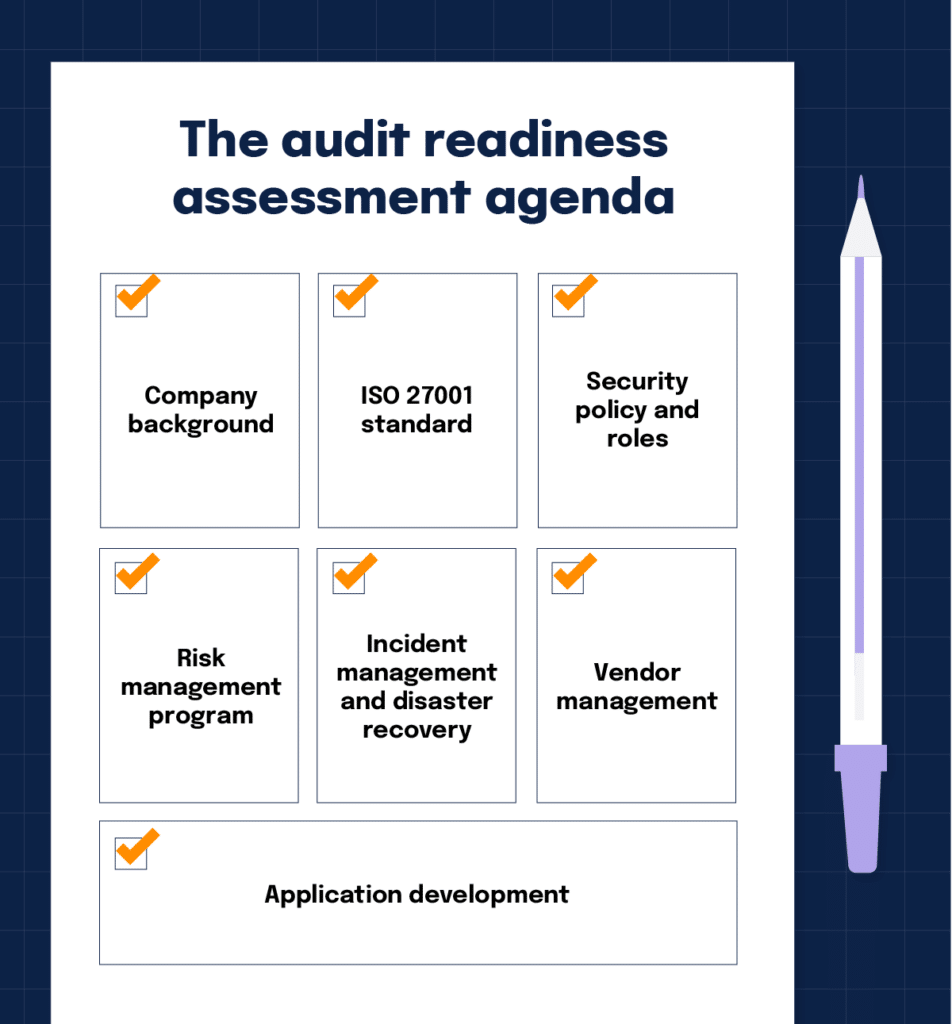
The auditor interviewed our CEO, VP of Product, VP of Engineering, and some of our developers who do security-related work. Here is a high-level agenda of how we spent our time:
- Company background — We provided company background to our auditor. We discussed why we founded Hyperproof, what we are trying to achieve, and the key capabilities of our software.
- ISO 27001 standard—The auditor educated our personnel on ISO 27001 and how it’s structured and scoped. This session helped us understand the boundaries of this framework and what auditors look for. For example, we discussed how much we do with third parties like CRM systems and how third-party systems are considered in these audits.
- Security policy and roles—Hyperproof shared our current security policy with our auditor. Our auditor asked us some questions about data, such as how data is segmented for different roles, what the roles are, and how the data architecture is structured.
- Risk management program — Our auditor talked to us about what we need in a risk management program and the different ways we could analyze and categorize the risks we identify.
- Incident management and disaster recovery — Our auditor reviewed Hyperproof’s incident management and disaster recovery plan.
- Vendor management — We had a discussion with our auditor about the types of vendors we work with (e.g. infrastructure vendors such as Microsoft Azure vs people who do one-off work). We talked about the importance of adding stipulations to our contracts to specify compliance requirements for our vendors.
- Application development — We discussed the need for a software development lifecycle policy and how we handle issues like version control, testing, and development. Integrating audit readiness devops practices into this cycle ensures that security requirements are automated within the pipeline rather than treated as a manual checklist at the end of the year.
In practical terms, this audit readiness assessment functioned as a focused audit & compliance readiness review: a structured conversation with our auditor to walk through our environment, test our assumptions, and turn loose ideas into a concrete remediation plan.
Frequently Asked Questions about Audit Readiness Assessments
What is the difference between an audit and an assessment?
An audit is a formal, independent examination that results in an opinion or certification (for example, a SOC 2 report or ISO 27001 certificate). An assessment is a pre-audit review or health check that evaluates how ready you are for that audit, identifies gaps, and prioritizes remediation work.
Do I really need an audit readiness assessment?
If your organization is new to frameworks like SOC 2, ISO 27001, or HIPAA – or you’re scaling quickly – an audit readiness assessment can save time and reduce risk. It surfaces control gaps and documentation issues early, so the official audit is smoother and less disruptive.
How does an audit readiness assessment fit into audits and assessments overall?
Think of your compliance program as an ongoing cycle of audits and assessments. You use readiness assessments and internal reviews to continuously improve, then bring in formal audits at key milestones to provide external assurance to customers, regulators, and partners.
Achieving compliance made easier with Hyperproof
Is your organization navigating the complexities of SOC 2, ISO 27001, or HIPAA audits? Share your experiences and preparation strategies with us. Meanwhile, simplify your path to compliance – request a demo of Hyperproof to see how it can streamline your audit preparation process.
See Hyperproof in Action
Related Resources
Ready to see
Hyperproof in action?






